With a
population of around 800 and being situated roughly in the middle of
Townsville and Mt Isa,
Richmond's lovely backdrop of gardens, bougainvilleas, native trees and shrubs, along with the towns recent literal step backwards into the Cretaceous Period, makes this the perfect adventure before travelling on.
William Landsborough explored the
Richmond district during his 1862 search for the Burke and Wills exploration party. Pastoral settlers first took up runs in the more accessible districts of
Winton and
Hughenden. Eventually in the late 1870s Arthur Bundock and Walter Hays took up the
Richmond Downs run, named after Bundock's birthplace on the
Richmond River, in northern New South Wales.
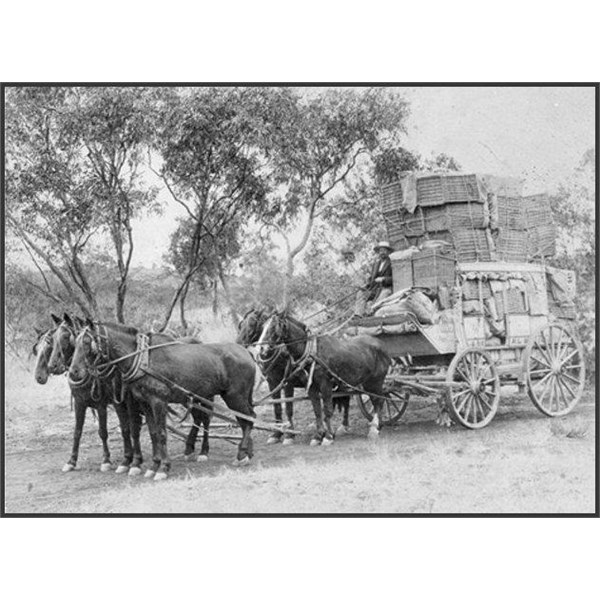
Cobb and Co coach Richmond to Cloncurry run driven by Mr Fred Richards 1906 crossing over the Gilliatt River Julia Creek to Cloncurry
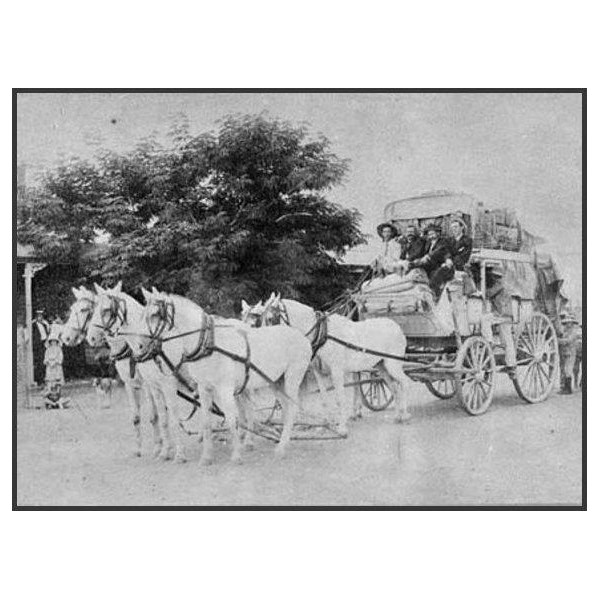
Cobb and Co's Royal Mail coach Richmond 1906 The driver is Mr A E Richards who drove the coach on the Richmond to Cloncurry run
For over 120 years
Richmond plodded along as a service town providing for surrounding districts, with bursts of enthusiasm through it's nearby 'Woolgar' gold discovery and subsequent rush, along with the town's important link with the Cobb & Co. coach service. However it wasn't until 1989 and the revelation of a 100 million year old Pliosaur skeleton which made people worldwide take notice of
Richmond. Although the second important paleological find in the area, the other being the famous Kronosaurus Queenslandicus in 1929, it was the 5 metre Pliosaur and ensuing marine fossil museum - Kronosaurus Korner, that ultimately has made
Richmond a must for all outback travellers, especially those wishing to experience the Dinosaur Trail towns including,
Richmond,
Winton and
Hughenden.
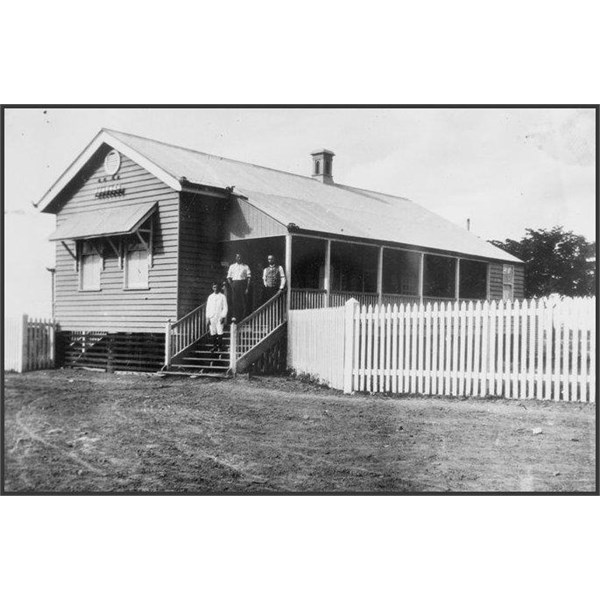
Post Office - Richmond 1910 - Destroyed by fire in 1923

Mail Timetable 1968
Below is a short-necked pliosaur, a marine reptile with powerful flippers and tail that was the largest predator in the inland sea once covering the vast plains of what is now Outback Queensland. This complete
Richmond Pliosaur was found on Marathon Station near
Richmond in 1990.
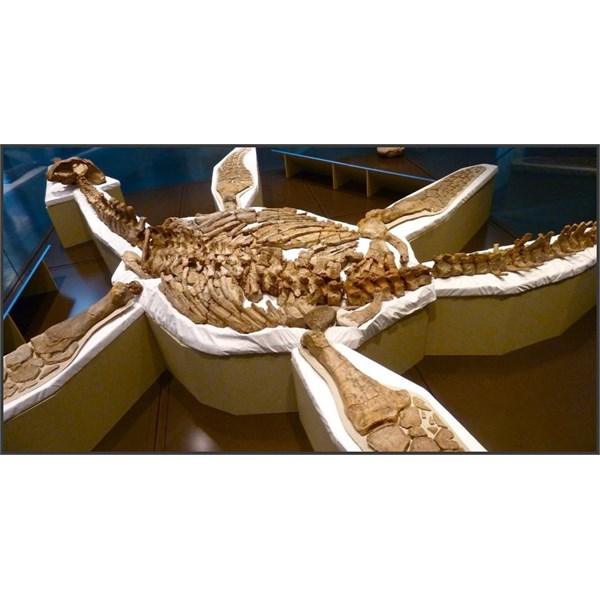
Short-Necked Pliosaur
From it's beginnings as part of the Great Inland Sea, through the times of original settlers of the region, the Oonoomurra tribe of Aborigines,
Richmond has become a town where people can remember their times here, not only for the fossil museum, but for relaxing by the bank of
Lake Fred Tritton, pulling in a nice Cod or Sooty Grunter, or perhaps cooling of with a dip at the
lake’s sandy beaches or picnicking amid the green lawns of
Lions Park (on Goldring street) where you can
check out the 'moon rocks', or Bobby Murray Park.
Richmond is also a birdwatchers delight with species including kingfishers, bowerbirds,
rainbow birds, fryer birds, parrots, finches, budgerigars, quarrion, white corellas and pink galahs, black and white cockatoos, emus, eagle hawks, plain turkeys,
brolgas and
Jabiru.
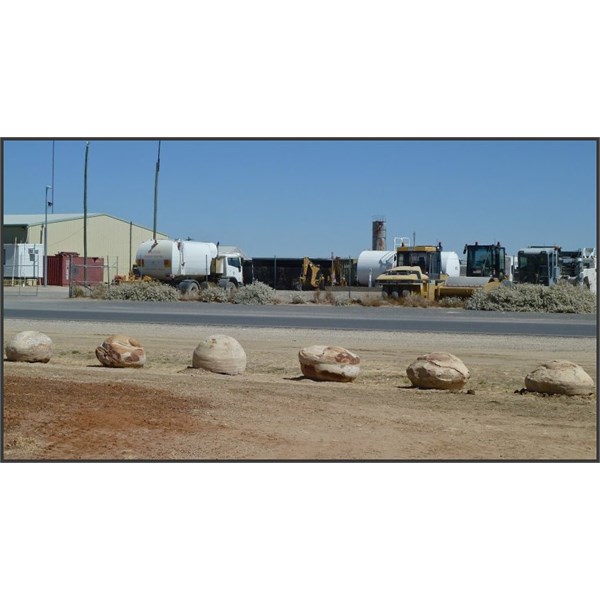
Richmond Moon Rocks

Richmond Moon Rock
Racecourse is a popular venue in the district, holding six race meetings each year and makes up an important part of Queensland Country racing's Fossil Trail series. Other local events include the biennial Fossil Festival featuring the World Moonrock Throwing Competition.
The Santalum Sandalwood Factory and Mill is the state's only sandalwood mill, principally manufacturing incense and joss sticks for export to Asia. A guided tour can be organised.
Throughout the year the
Richmond Civic Centre holds various entertainment, which is
well supported by locals and tourists alike. 40 km north of town on the
Croydon Road, you can find the
Cambridge Ruins which are 19th-century
ruins of an old Cobb & Co coach station. And for the Taphophiliac's,
Richmond also has a
pioneer cemetery dating back to the early 1900's which can be found on the
Richmond Highway, next to the B.P service station on your way to
Mount Isa.
The round objects in the photographs, known locally as "Moon Rock", are common (sometimes conspicuous) throughout the black, cracking-clay parts of western Queensland. They range in size from golf ball to boulders weighing several tonnes. Some townships use them as eye-catching ornaments lining driveways.
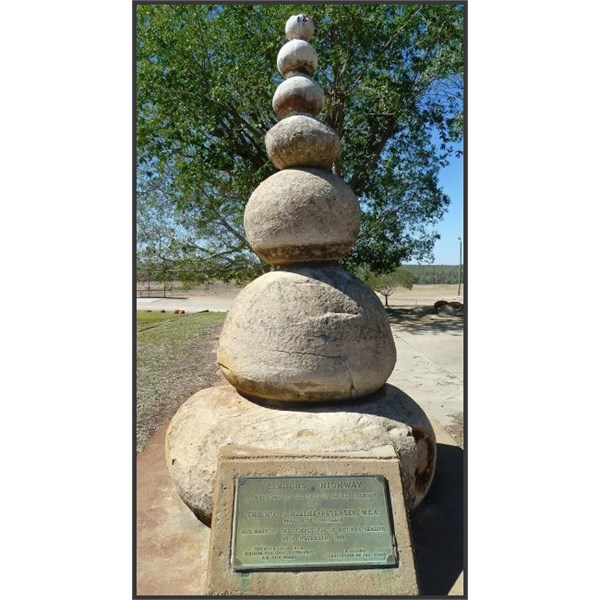
Commemorating opening of the Sealed Hwy 1976
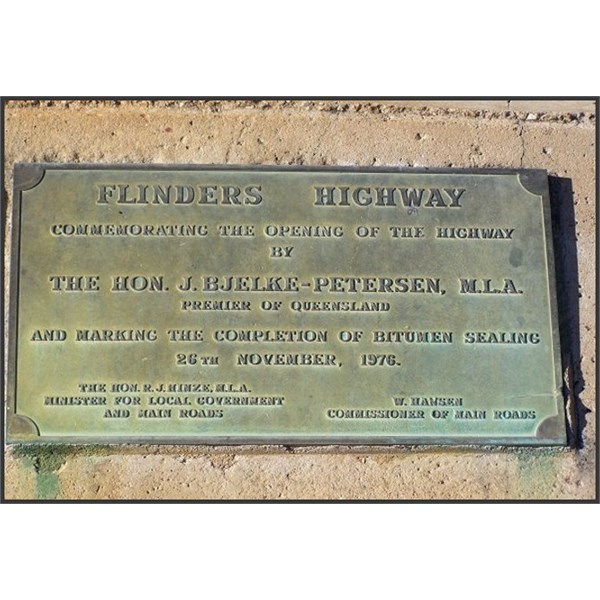
Opening of the Sealed Flinders Hwy 1976
The nodules are concretions formed in sediment by the accumulation of
limestone (calcium carbonate) within mud on the floor of the ancient sea which covered this part of Queensland about 100 million years ago. They are the result of chemical processes, not of water erosion.
When the mud was of uniform composition and texture, nodules formed spherical shapes. In sediment not of uniform composition and texture, or in the presence of other chemicals, a variety of shapes formed. Sometimes these odd shapes are mistaken for fossils.

Broken Moon Rock with a Shell
The nodules are not themselves fossils but they may contain fossils, especially seashells (see lower left photograph), forming the nucleus around which carbonate accumulated to form the nodule. Sometimes wood and bone are found at the centre of concretions.
Richmond hosts the World Champion Moon
Rock Throwing Competition every two years at its Fossil Festival.
.